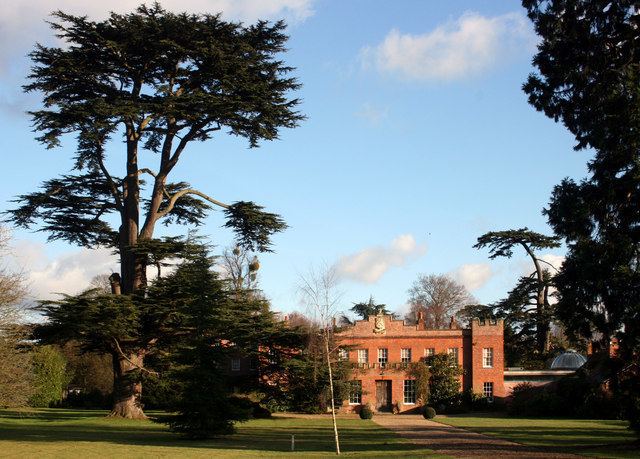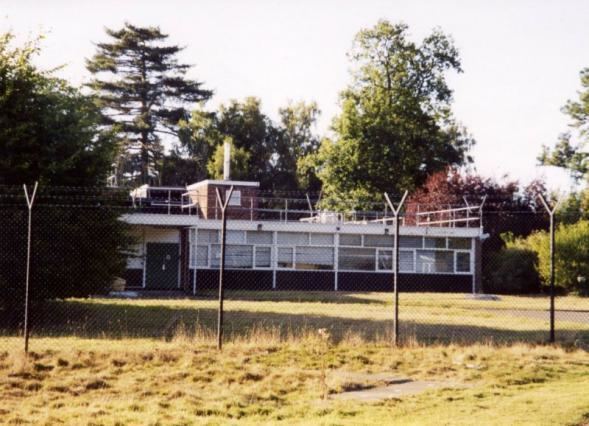 | ||
Similar Caversham Park, Shiplake railway station, Greys Court, Wood Norton - Worcestershire, Radcot Bridge | ||
Bbc receiving station crowsley park january 1985
Crowsley Park is a 160-acre (65 ha) country estate in South Oxfordshire, central-southern England, owned by the British Broadcasting Corporation (BBC).
Contents
- Bbc receiving station crowsley park january 1985
- Overview
- Location
- BBC receiving station
- The Baskerville legacy
- Public access
- Miscellaneous
- References
Overview

Since the Second World War, Crowsley Park has been the site of a signals-receiving station used by BBC Monitoring, based at Caversham Park, three miles to the south.

Crowsley Park House, a Grade II listed 18th century mansion house, sits in its own grounds within the estate and is still used as a private residence. Smaller houses on the estate — South Lodge (at the main entrance to the park), North Lodge, Keeper's Cottage and Crowsley Park Lodge — are also privately occupied.
Seventy-six acres of woodland on the eastern and northern sides of the park, known as Crowsley Park Woods, is leased to the Forestry Commission.

The remainder of the estate consists of wooded parkland used as cattle and horse pasture. Three (formerly four) very large (11-metre diameter) satellite dishes used by the BBC are on the north side of the estate. Until 2014, there were also many traditional radio aerials (antennas) spread across the park.

The BBC leases the estate to private tenants, operating its receiving station from a modern building erected for the purpose near the centre of the park.
Crowsley Park's history includes an association with Sir Arthur Conan Doyle, author of the Sherlock Holmes detective stories.
Location
Despite being only two miles north of the edge of the large town of Reading, and a similar distance southwest of the smaller town of Henley-on-Thames, Crowsley Park lies in a quiet rural setting, close to the southwest end of the Chiltern Hills. It is within the Chilterns Area of Outstanding Natural Beauty.
The quietness of the location, especially the absence of electrical noise, was among the factors that drew the BBC to the site.
In 2003, the hamlet of Crowsley became part of the newly created civil parish of Binfield Heath. Until then, both Crowsley and Binfield Heath had been part of the civil parish of Shiplake. Crowsley is about 40 miles west of the centre of London.
BBC receiving station
Crowsley Park and Caversham Park were acquired by the BBC during the Second World War. In 1943, the BBC moved the headquarters of its Monitoring Service from Wood Norton Hall, near Evesham in Worcestershire, to Caversham Park, with Crowsley Park acting as the service's receiving station, picking up radio broadcasts from Nazi Germany and many other countries.
Shortwave, mediumwave and longwave receivers were installed in huts at Crowsley, built some distance from the main house. The signals received were fed down telephone lines to Caversham to be listened to by monitoring staff. A more permanent building was later erected for the receiving station.
In 1974, the BBC's separate, and larger, receiving station was moved from Tatsfield, on the North Downs south of London, to merge with the facility at Crowsley. The Crowsley station was expanded to accommodate the equipment and staff transferred from Tatsfield. Following the merger, Crowsley was formally known as the "BBC Receiving Station" to reflect the range of work it did for various parts of the BBC (in addition to Monitoring) and other international broadcasters. This name is no longer used, the site now simply being an outstation of the Caversham Park operation.
As part of an engineering upgrade in the 1980s, a number of satellite dishes were installed, joining the Beverage and rhombic aerials and curtain arrays already on the site. Additional rhombic aerials were erected to boost shortwave reception from the Middle East and North Africa, alongside those already used for signals from Europe and the Soviet Union, the latter having been the station's priority target during the Cold War. One of the two curtain aerials (which had been used for the relaying by the BBC of the Voice of America) was taken down. The remaining curtain aerial was taken down in more recent years.
With the decline in the use of shortwave in radio broadcasting, all of the Beverage and rhombic aerials were taken down in July 2014.
The Baskerville legacy
Among Crowsley Park's former owners were the Baskerville family, one of whose members, Henry Baskerville, was High Sheriff of Oxfordshire in 1847. Stories about the family and its association with fierce dogs were among the inspirations for Conan Doyle's The Hound of the Baskervilles (published 1901-02) in which "Sir Henry Baskerville" is a leading character.
The connection with the Baskervilles is preserved in statues of "hell hounds" with spears through their mouths which sit on the stone gateposts at the entrance to the park and atop the front of Crowsley Park House.
A pub in the nearby village of Lower Shiplake is called The Baskerville Arms.
Public access
The estate is closed to public vehicular traffic and neither Crowsley Park House nor the BBC station are open to the public. However, the park is crossed by two public footpaths. The western path (starting from the main entrance), which is part of the southern extension to the Chiltern Way, gives a clear view of the house. There is a distant view of the house, through an ornamental avenue of trees, from the public road junction at the southwest corner of the park. The three very large satellite dishes mentioned above are visible from the public road (Devil's Hill) that forms the northern boundary of the park.
The Forestry Commission woodland is open to the public, including access along a public bridleway.
Miscellaneous
Crowsley was once spelt Crouchley, suggesting that the first syllable of Crowsley may once have been pronounced to rhyme with cow or crew. Today, Crowsley is pronounced with the first four letters sounding the same as the bird.
Parts of an episode of the BBC television science-fiction drama series Doctor Who were filmed in the grounds of Crowsley Park in December 1980. In one scene, the Doctor climbs the tower that carried the BBC receiving station's VHF and UHF aerials. The tower remains in place to this day, although all the aerials on it have been removed.
The village of Shiplake has a bed and breakfast establishment called Crowsley House.
